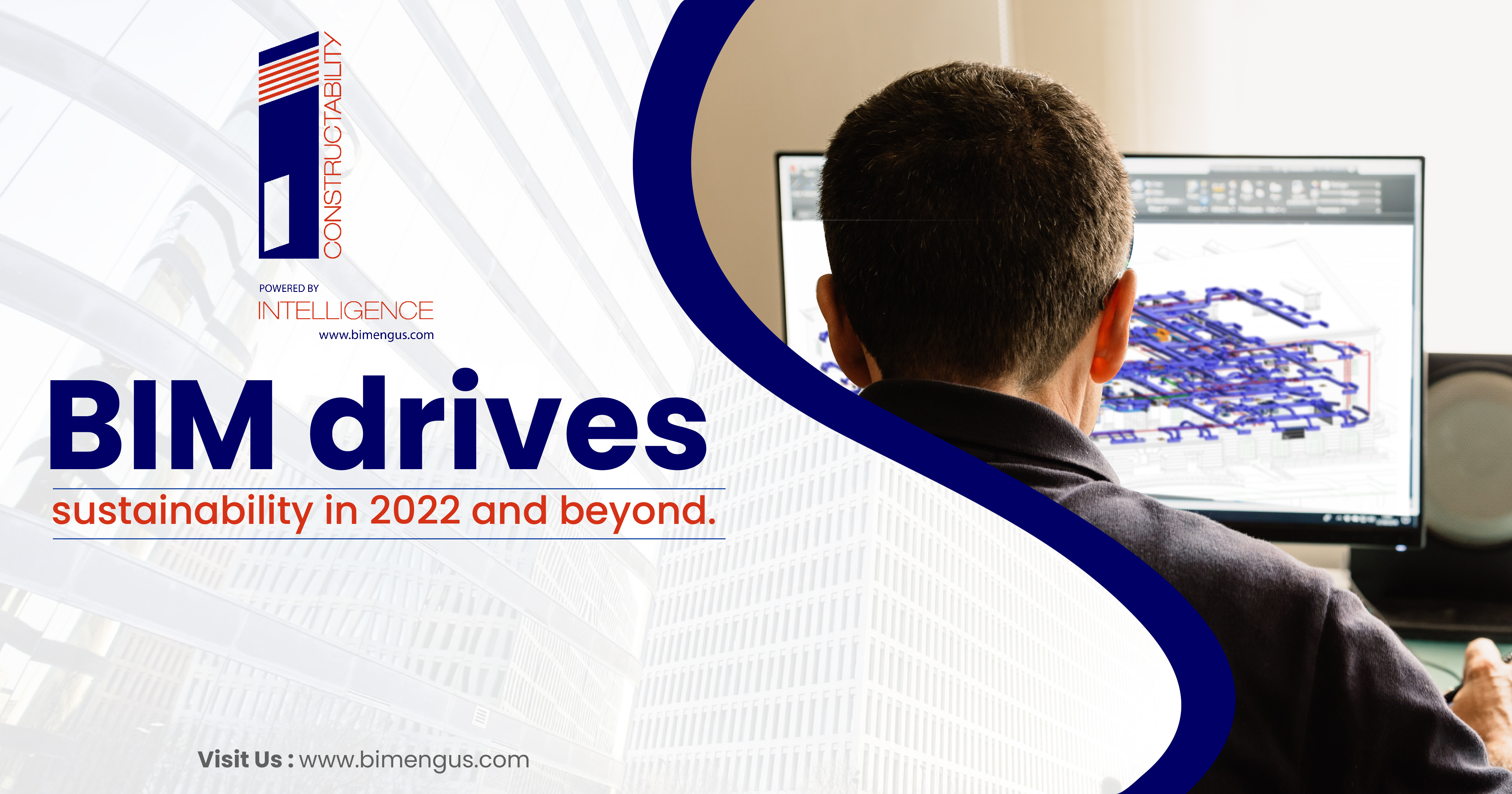Leveraging BIM data transformed into critical information over multiple building lifecycles encourages quick design, construction, and maintenance. Using BIM data in the field lowers construction waste, promotes cost-effective project outcomes, and drives sustainable FM.
A coordinated and clash-free 3D model collaborated upon by various teams and trades augments sustainability by :
- Enabling design for value engineering
- Enhanced delivery and operations
- Combining technical, construction, operational, and fabrication data
- Accommodating design alterations within flexible project timelines to navigate around time and cost overages
- Practicing complete collaboration across all teams and trades to stay on the same page
- Taking charge of real-time changes to adapt and figure out alternative solutions
- Utilizing clash-detection tools to cancel out makeshift solutions, eliminating rework, and saving cost and time
- Coordinating planning, design, manufacturing, logistics, schedule, and costs for improved material usage and lower rework
How can asset creation be sustainable and manageable?
- Changing asset operations and management to achieve the required performance and demands needs to be done without actually building something
- Deploy minimal construction whenever and wherever possible to create new assets or refurbish existing assets to perform efficiently
- Utilize Lean construction processes and tools enriched with construction materials that produce a lower carbon footprint
How does BIM support these processes?
- Utilizing processes and measurement tools to compare installed and required carbon emissions through various design prototypes
- Offsite prefabrication of building components lowers material waste, improves component accuracy, accelerates onsite installation, and promotes material recycling
- Using a coordinated and clash-free 3D model to expedite field installation through 360 visualization
DfMA or Design for Manufacture and Assembly eliminates legacy design and construction processes.
- Improvements in the quality of deliverables and field personnel safety promote efficient and productive construction outcomes
- Augmented accuracy and durability of building components enhance sustainability
- Fewer site visits, lower material waste, and reduced logistics lead to moderate carbon emissions and fuel consumption, and diminished noise pollution
Complete visualization, QTOs, and project sequencing through coordinated and clash-free 3D BIM models do improve onsite operations. Early development, coordination, and collaboration over a clash-free 3D model supports multiple teams and project stakeholders with in-depth visualization for greater project interaction. Architects using BIM can make their 3D models more accurate, clear, and communicable for faster design alterations to enable better project outcomes and prevent further maintenance or modifications after assets have been installed and entered the service phase. Digital visualization supports prototyping to churn-out alternatives to calculate energy consumption and the visual impact of changes to get the best solution.
Sharpening project performance.
As-Built models reinforced by As-Built information on a single platform through a single source of truth make it easier for owners, FM personnel, and operators to utilize data. Owners find it extremely challenging to manage fragmented information or alterations or FM improvements. As a consequence, FM, repairs, and replacements would require repeated survey runs, expensive field investigations and assessments, and altered design leading to low technical performance, greater use of resources, and low profitability.
Building Information Modeling (BIM) drives accurate and detailed component data embedded within the 3D asset model. Planning maintenance activities for various building assets with multiple design types can synchronize maintenance programs, and minimize costs, and fragmentation. Better risk reduction and actions can be triggered based on the 3D model. Perpetual monitoring and analysis of asset performance during installation and operations with data incorporated into the 3D model provides Facilities managers an opportunity to achieve higher efficiency. Continuous control and measurement of assets through digital twins reduce energy and carbon levels.
Leverage accurate and complete data to design, deliver, and manage assets.
Learning from records and experience is a common industry challenge. A lack of data-based processes and tools creates recurring mistakes. Building Information Modeling (BIM) encourages a collaborative feedback response into the preconstruction design process to promote operational improvements of new assets.
BIM Engineering US., L.L.C. supports owners and Facilities Managers with comprehensive 7D solutions and services for data analysis, condition assessment, data interlinking, data digitization, Laser Scanning, Point Cloud modeling, and CMMS data integration. Contact our BIM team to avail high-performance and sustainable 7D solutions for new and existing projects.
Visit Us: www.bimengus.com
